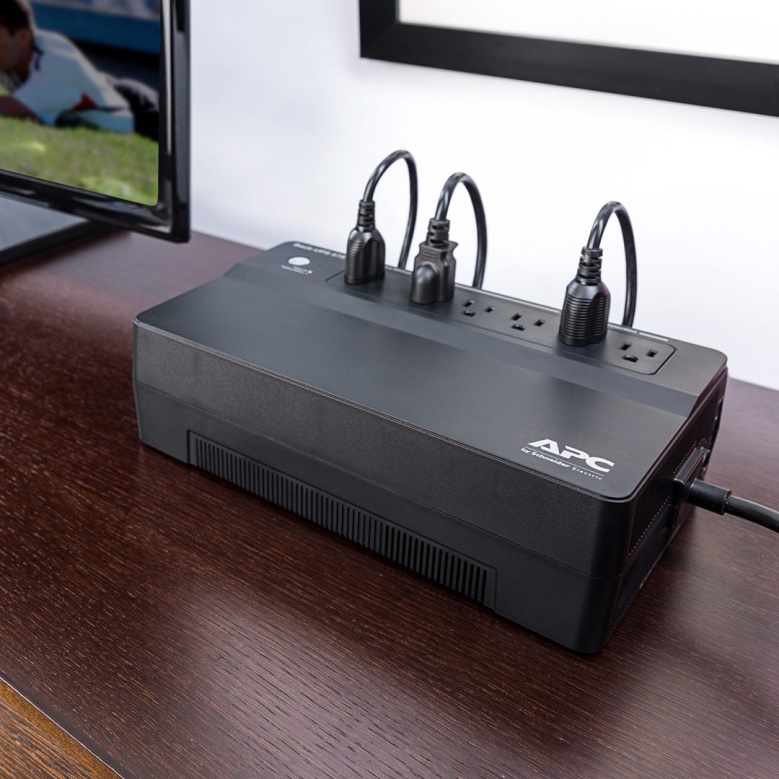In this age of digital transformation, as you increasingly depend on IT and data systems to keep your business running at peak performance, it’s more important than ever to ensure that The system can operate even in the event of a power outage.
That is the purpose of an uninterruptible power supply (UPS): providing clean backup power for IT and other critical systems. In the event of a power outage, a quality UPS can make the difference between keeping a normal business running and losing hours of data and productivity.
UPS can provide backup power anywhere in minutes – enough to safely shut down workstations and servers or allow backup generators to kick in. To understand how to choose the best UPS for your business, you need to have a solid understanding of your power and other critical systems and their ability to withstand downtime.
APC, Schneider Electric’s flagship brand, offers UPS options for Computers & Peripherals, Network & Servers, as well as Data Centers & Infrastructure.
In this UPS buying guide, we’ll walk you through the UPS essentials and purchasing criteria you need to consider to make an informed decision for your organization.
Why do you need UPS for your home or business?

Home: Electronic devices that you use every day for communication, security and entertainment are at risk of damage and breakdown due to unexpected power outages, voltage fluctuations or other power failures. UPS provides backup power and battery protection for electronic devices, including:
- Wireless network equipment (router, modem)
- Computer
- TV
- Security System
- Game console
- Mobile device
Business: Downtime due to a power outage will be difficult for any business, but can be financially crippling for a business or organization. Every year, billions of dollars are lost due to downtime due to power outages that UPS could have prevented. For Fortune 1000 companies:
- Average annual cost of unplanned downtime, $1.25—$2.5 billion
- Average cost per hour for infrastructure failure: $100,000
- Average cost per hour for critical application failure: $500,000 — $1 million
- Small and medium-sized businesses may be at the greatest financial risk due to limited revenue generation during downtime.

What kind of UPS do you need?
Electronic equipment classifies according to maximum watts and maximum VA (volt-amperes) power. Attached equipment cannot exceed maximum capacity. Watts measures the actual power output by a device, while volt-amperes are the product of the device input voltage times the current.

Power Factor
For computers and UPS equipment, wattage and VA can be significantly different, although VA power is always greater than watt capacity. The ratio between watts and VA is called the ‘power factor’ and is expressed as a number (i.e. – 0.8) or a percentage (i.e. – 80%). When sizing UPS for your specific requirements, power factor matters most. In general, your UPS should have 20-25% more Watts output than the total power consumed by any attached equipment.

How much runtime do you need to support your attached device?
That depends on what you plan to back up with your UPS. Runtime refers to how long the UPS can power attached equipment in the event of a power failure. The more devices you plug into your UPS, the less time it will run, so it’s important to make sure your UPS provides backup power only to your most important equipment.

What are some key features to understand when choosing a UPS system?
BASIC:
User Replaceable Battery: Increases availability by allowing trained users to perform battery upgrades and replacements.
Surge-Only Outlets: Protects secondary electronics from surge surges without reducing battery power used to run primary electronics during power outages .
Building Wiring Failure Indicator: An LED indicator that notifies users of potentially hazardous wiring problems in wall circuits.
Transformer-Block Spaced Outlets: Protects the device without blocking access to other sockets.
Auto-test: Periodic battery testing ensures early detection of batteries in need of replacement.
ADVANCED:
Automatic Voltage Regulation (AVR): Offers high applicability by regulating low and high voltage conditions without using batteries.
Pure sine wave output on battery: Simulates utility power to provide the highest level of compatibility for active PFC (power factor correction) servers and sensitive electronic equipment.
SmartSlot: Customize UPS capabilities with network management tabs.
Extendable Runtime: Enables additional runtime as needed via an external battery pack.
Electricity Conditioning: Protects connected loads from surges, voltage spikes, lightning and other power disturbances.
SPECIALIZED:
Adjustable voltage switching point: Maximize useful battery life by widening the input voltage window or tightening the output voltage regulation.
Temperature compensated battery charging: Extends battery life by adjusting charging voltage according to battery temperature.
Intelligent battery management: Maximizes battery performance, life, and reliability through accurate, intelligent charging.
Fault Warning: Gives early warning fault analysis, ensuring proactive component replacement.
Plug-and-Play External Batteries: Ensure clean, uninterrupted power by adding additional UPS runtime
What power conditions will UPS backup batteries protect against?
Many electrical problems stem from commercial grids, with thousands of miles of transmission lines, which can be damaged by weather variations such as hurricanes, lightning storms, snow, ice and floods, as well as equipment failure. accidents and traffic incidents.
For more information on the different types of electrical problems, please see the documentation by following the instruction link.
Document link: https://www.apc.com/vn/en/download/document /SPD_VAVR-5WKLPK_EN/



